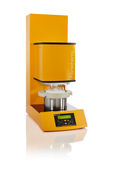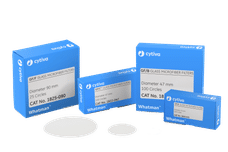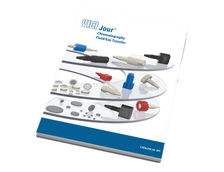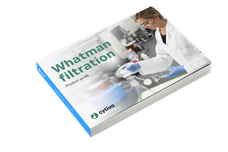Carbon Nanotube Sponges: Tough Water-Repellent Sponges Absorb Oils and Solvents up to 180 Times Their Own Weight
Scientists have invented a carbon-based sponge that can soak up organic pollutants, such as oils and solvents, from the surface of water. No water is absorbed and the sponge can then be wrung out and reused, like an ordinary household sponge. Absorbing up to 180 times its own weight in organic matter, the sponge is light and tough and has the potential to dramatically enhance oil spill cleanup.
Professors Anyuan Cao (Peking University) and Dehai Wu (Tsinghua University), who are publishing their breakthrough in Advanced Materials, say “the sponges have new properties that integrate the merits of fragile aerogels with their high surface area, and conventional soft materials with their robustness and flexibility.”
Current commercial absorbents for oil spill recovery and industrial use tend to be based on cellulose or polypropylene. These materials can absorb only up to 20 times their own weight and are impractical for large spills, where dispersants are used. Dispersants allow the oil to become diluted, but it remains in the water. Other materials based on porous oxide-based materials or other polymers can absorb up to twice as much pollutant per weight, but generally need to be heated to remove the organic material. High-temperature heating is not practical on small scales or on ships, and a clear advantage of a squeezable sponge is that the oil can be readily recovered and reused. For other applications including solvent cleanup, the sponges can be heated to remove the pollutant, without affecting the properties of the sponges.
Cao and Wu’s sponges are made from interconnected carbon nanotubes – tiny, strong and hollow cylinders of interconnected carbon atoms. In this instance the tubes are 30-50 nanometres across and tens to hundreds of micrometers long. The surface of the tubes is naturally hydrophobic, therefore no further modification is needed for the sponges to repel water. At the same time, they love to absorb oil on their surface. As the sponges are over 99% porous or empty, they float on water and there is a lot of room for oil to be absorbed, leading to the extremely high capacity for retention – for example, 143 times the sponge’s weight for diesel oil and 175 for ethylene glycol.
Lateral thinking was the key to the scientists’ breakthrough. A major ambition among carbon nanotube researchers is to look for ways to make large lined-up arrays of the tubes. Cao and Wu, however, searched for a method that would make long tubes that were completely disordered. This randomness allows the tubes to slide past each other, allowing the sponge to be manually reduced in size by 95%, and bent or twisted without breaking. As the sponge is squeezed, any oil or solvent in the cavities and on the surface of the tubes is expelled. To gain the best effect, the sponges first have to be filled with solvent and then compressed gently in a process called densification, but after this they are extremely robust and can be used potentially thousands of times. They swell to recover their original dimensions when exposed to oil or solvent and “a small densified pellet of sponge can quickly remove a spreading diesel oil film with an area up to 800 times that of the sponge”, as illustrated in the accompanying figure. This effect occurs even if the sponge is placed at the edge of the spill.
Potential applications reach beyond oil spill recovery. According to Cao, “the nanotube sponges can be used as filters, membranes, or absorbents to remove bacteria or contaminants from liquid or gas. They could also be used as noise-absorption layers in houses, and soldiers might benefit by using these sponges in impact energy absorbing components while adding little weight. Thermally insulated clothing is also possible.” Large-scale production is currently being investigated.
Original publication: X. C. Gui, J. Q. Wei, K. L. Wang, A. Y. Cao, H. W. Zhu. Y. Jia, Q. Shu, D. H. Wu; “Carbon Nanotube Sponges”; Advanced Materials 2009.
Most read news
Topics
Organizations
Related link
Other news from the department science
These products might interest you

FIBRETHERM by C. Gerhardt
Automatic Fibre Extraction for Feed Analysis
FIBRETHERM from C. Gerhardt: Efficient – Precise – Method-Compliant

Mini-UniPrep™ by Cytiva
Improved HPLC Sample Preparation
Save 66 % sample preparation time and reduce costs by 40 %

Glass and quartz microfiber filter by Cytiva
Request a glass microfiber sample pack to meet your battery development needs
Delivering efficient and consistent results

GF/C and 934-AH RTU (Environmental) by Cytiva
Meet wastewater regulations with the right filter
Streamline lab operations and ensure high-quality results

VICI Jour Katalog 15INT by VICI
The VICI Jour Catalog - Accessories for (U)HPLC and Liquid Handling
Capillaries, Tubing, Fittings, Filters, Safety-Products, Tools and much more

Hahnemühle LifeScience Catalogue Industry & Laboratory by Hahnemühle
Wide variety of Filter Papers for all Laboratory and Industrial Applications
Filtration Solutions in the Life Sciences, Chemical and Pharmaceutical Sectors

Whatman filtration product guide by Cytiva
New filtration catalog - a wealth of information on 286 pages
Discover the perfect filters for your laboratory application

Get the chemical industry in your inbox
By submitting this form you agree that LUMITOS AG will send you the newsletter(s) selected above by email. Your data will not be passed on to third parties. Your data will be stored and processed in accordance with our data protection regulations. LUMITOS may contact you by email for the purpose of advertising or market and opinion surveys. You can revoke your consent at any time without giving reasons to LUMITOS AG, Ernst-Augustin-Str. 2, 12489 Berlin, Germany or by e-mail at revoke@lumitos.com with effect for the future. In addition, each email contains a link to unsubscribe from the corresponding newsletter.


























































